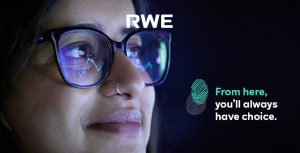It’s not an overstatement to say that COVID-19 has changed the student hiring process indefinitely. Last spring, hiring was forced to a standstill as companies were hit hard with the repercussions of the pandemic. Hiring didn’t just pause; it was stopped entirely. Unemployment peaked at 14.7%, an all-time high since the Great Depression. Companies were letting employees go to keep up with the profit loss, leaving an unstable and unreliable market for students graduating into the workplace.
While the scars remain, the job market has begun the mending process and is back to hiring, but in a way that’s completely unrecognizable than before. With universities moved to a primarily online model, this has become our youngest generation’s new status-quo. Hours are spent learning and working behind computer screens in a way that, in the past year, has become more familiar than what they were previously exposed to.
Consequently, their expectations of graduating and entering the workforce have shifted. Before, their expectations were guided by those who graduated before them, but now those presumptions are no longer applicable in the workplace’s current state. With career-aligned campus clubs, classes with hands-on experience, and on-site internships within their favored industry being switched to remote environments or stopped entirely, students are finding it more and more difficult to be comfortable with the idea of working in-office rather than from the comfort of their home.
To keep up with these new expectations, companies are being forced into changing their student recruitment models altogether to accommodate these new circumstances. In-person job fairs are no longer practical for the growing online workforce, and virtual interviews have become more commonplace than face-to-face interviews. Zoom and Google Meet have replaced pencil skirts and paper resumes. Virtual meeting software is everywhere, and virtual job-fairs are on track to becoming the most popular way of finding student graduates.
Gone are the days where firm handshakes and great conversational energy can be the basis of hiring. It can be difficult for employers to gauge an applicant’s potential simply through the computer screen and prior on-site work experience can no longer be held at the standard it once was in a climate where those requisites are near impossible.
Additionally, both students and current employees have become so acclimated to the idea of remote work, they’re no longer willing to switch back or settle for the in-person alternative. In interviews, questions will shift from work-life balance to how the company dealt with the COVID-19 crisis and what their remote working policies look like. Whether that entails the possibility for employees to work from home a few days a week or full-time, it’s something companies will have to consider during the recruitment process.
This isn’t a bad thing. Companies are realizing that the jobs they require can just as easily be done from home as they can be from the office, allowing them to widen their scope of who they will and will not hire for the job. With remote software, they can reach students from universities across the globe simultaneously without the worry of compatibility or relocation. Student recruitment is no longer limited by geographical barriers. Rather the scope can be defined by any boundaries.
As the workforce settles and in-person events begin to open up, it begs to question: will remote work phase out? It’s unlikely. FlexJobs recently did a survey in which 65% of remote workers have claimed that they want to continue working remotely post-pandemic and are willing to sacrifice their pay to get it.
Suffice to say, remote work isn’t going away anytime soon and it’s up to companies to adapt.







